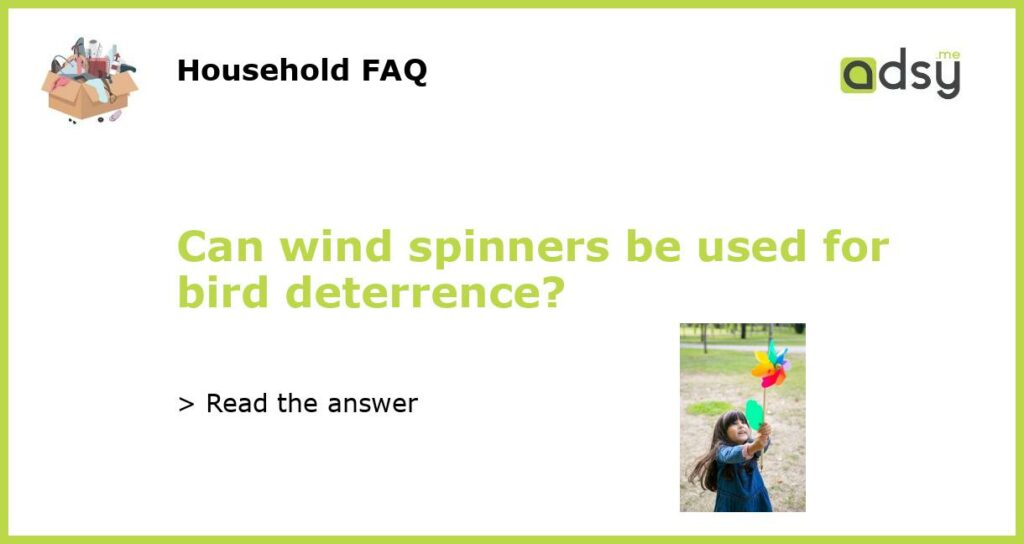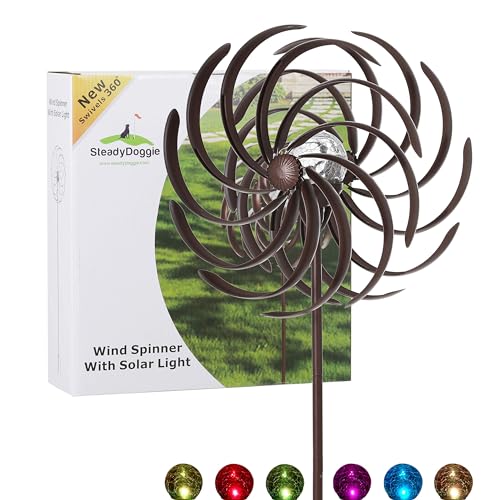Wind Spinners: An Effective Bird Deterrent?
When it comes to bird deterrence, there are a plethora of options available on the market. From scarecrows and wind chimes to fake predators and reflective tape, the choices can be overwhelming. One increasingly popular option is the use of wind spinners. These whimsical, spinning decorations have long been used for their aesthetic appeal, but can they truly serve as an effective means of bird deterrence? Let’s delve into the topic and explore whether wind spinners are a viable option for keeping birds at bay.
Understanding the Science Behind Bird Deterrence
Before we explore the effectiveness of wind spinners, it’s essential to understand the science behind bird deterrence. Birds rely heavily on their sight to navigate and identify potential threats or food sources. Their visual system is extremely sensitive, allowing them to spot movements and detect patterns from afar. This is why visual deterrents, such as scarecrows and reflective tape, can be effective in deterring birds.
How Wind Spinners Work as Bird Deterrents
Wind spinners take advantage of birds’ highly sensitive visual system by providing constant motion and eye-catching patterns. The spinning movement created by wind spinners not only creates a visual disturbance but also produces flashing lights, which can startle and deter birds from approaching the area. The combination of motion and reflective elements in wind spinners make them attractive and effective bird deterrents.
Real World Effectiveness of Wind Spinners
While wind spinners have gained popularity as bird deterrents, their effectiveness in real-world scenarios can vary. In some cases, wind spinners have proven to be highly effective in deterring birds from specific areas. There are numerous success stories shared by gardeners and farmers who claim that wind spinners have significantly reduced bird damage to their crops.
However, it’s important to note that bird behavior can be unpredictable and can vary across different locations and species. What may work well for deterring one type of bird in a certain area may not be as effective for others. Some birds may become habituated to wind spinners and eventually ignore their presence.
Factors to Consider When Using Wind Spinners for Bird Deterrence
While wind spinners can be a worthwhile addition to your bird deterrence strategy, several factors should be considered:
- Placement: Proper placement of wind spinners is crucial. Strategic placement in areas where birds are causing the most damage can yield better results.
- Size and Quantity: The size and quantity of wind spinners can also impact their effectiveness. Opting for larger and more visually striking spinners can be more deterrent for birds.
- Rotation: Wind spinners that rotate smoothly and consistently are more likely to capture birds’ attention and discourage them from approaching. Regular maintenance and lubrication may be necessary to ensure proper rotation.
- Complementary Methods: Combining wind spinners with other visual and auditory deterrents can enhance their effectiveness. For example, using wind chimes or reflective tape alongside wind spinners can create a multi-sensory deterrent.
- Species-Specific Considerations: Different bird species may respond differently to wind spinners. It’s important to research the behavior and preferences of the birds in your area to choose the most appropriate deterrents.
The Verdict: Wind Spinners as Bird Deterrents
While wind spinners may not be a foolproof solution for bird deterrence, they can be a valuable addition to your overall strategy. The constant motion, reflective surfaces, and eye-catching patterns of wind spinners can startle and deter birds from your property. By considering factors such as placement, size, rotation, and complementary methods, you can increase the effectiveness of wind spinners as a bird deterrent.
When experimenting with bird deterrence methods, remember that adaptability and flexibility are key. Birds may become accustomed to certain deterrents over time, so periodically changing the location or type of wind spinner can help maintain their effectiveness. Monitor the results and make adjustments as necessary to ensure the best outcome in deterring birds and protecting your property.






